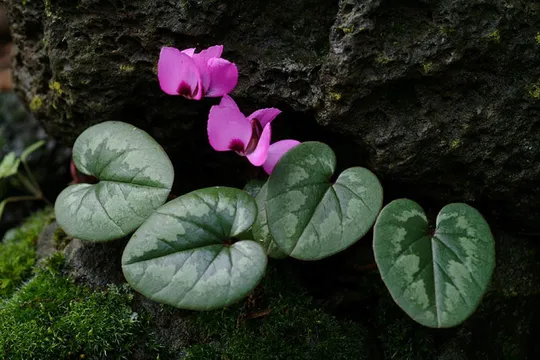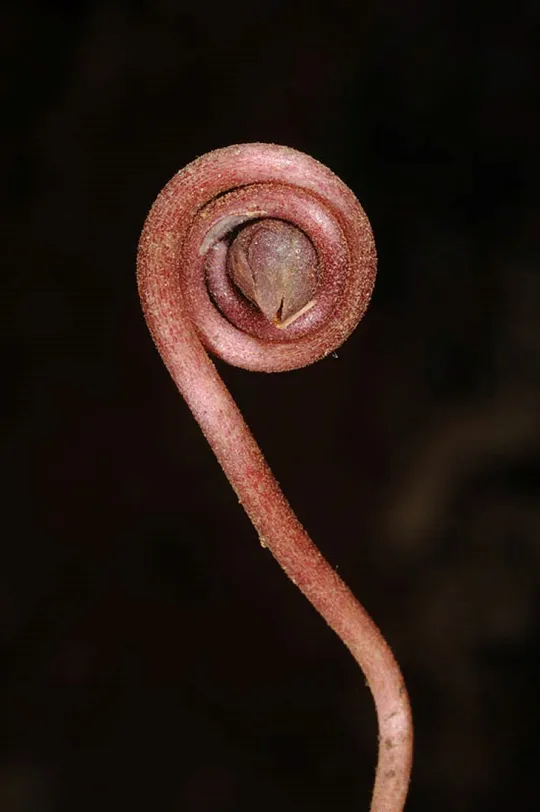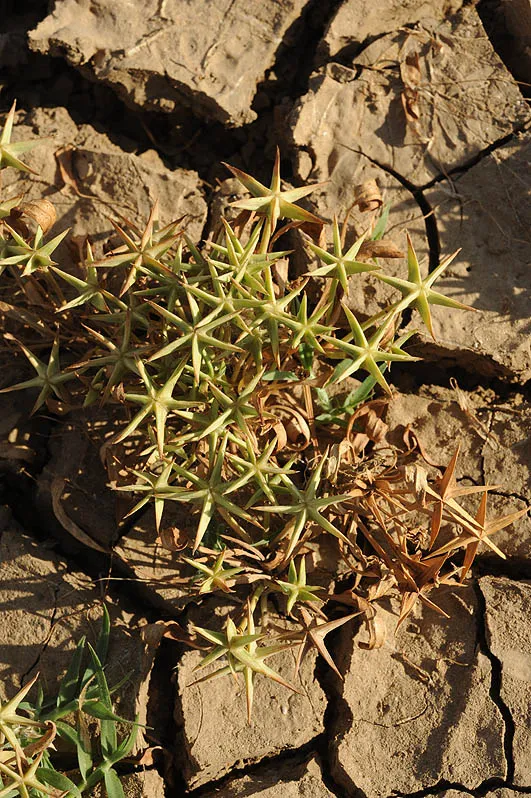Roundl-leaved Cyclamen
Cyclamen coum


Cyclamen coum grows in the Upper Galilee, the Golan Heights and at the foot of Mount Hermon, on 20 documented sites in the north of the country, all of them at altitudes above 800 meters. According to estimates there are about 25 sites. The famous botanist P.E. Davis, who served in the area during World War II, was the first to collect the species in Israel in 1943 on the Mount Meron peaks. In the Upper Galilee it is restricted to Mount Meron and to its neighboring peaks, e.g. Mount Afa'im, Mount Hilel, and Mount HaAri and Mount Shazur. In the Northern Golan it is common in large contiguous populations in Odem Forest, over nine square kilometers. Fragmented, more southern populations appear on Tel Poran, Mount Bar’on, Mount Bental and the Bashanit ridge. In the lower Mount Hermon it is found on Mount Keta and near Maǧdal Shams. On the high Mount Hermon (outside the scope of this book) the plant is scattered to rare and appears on rocks and open sub-forest at altitudes of 1100-2000 meters.
The Meron block populations are probably relictual and survived on the high peaks as remnants of the montane vegetation of Lebanon and Turkey, which spread here in a colder period of the Upper Pleistocene.
Open,
rocky sites woodlands, on limestone or hard basalt or near Quercus calliprinos
and Pistacia palaestina tree trunks. The fruit stalk is adapted to coil and
push the capsule into rock crevices. In Lebanon and southern Turkey C.
coum grows in the forests of Juniperus and
Quercus at the foot of trees on rocky slopes.
The
species in the genus Cyclamen are corm geophytes that grow mainly around
the Mediterranean Basin and in the Balkan Mountains. The genus distribution
center is in western Syria, the Aegean Islands and the Balkans. One species
deviates southwards – C. somalense that grows as an isolated remnant on the Horn of
Africa. Two species grow in North Africa: C.
africanum
in the Atlas Mountains and another relict species in Jebel Akhdar in Libya. In
Israel only two species grow in nature, C. persicum and C. coum. Ten Cyclamen species bloom in the autumn
without leaves, five species bloom in winter and only four bloom in the spring.
The plant does not secrete nectar and attracts pollinators with its abundant
pollen; the pollen is hidden inside the flower and only "smart" bees that
learn to roll over and shake the flower can collect the pollen. Some believe
that Cyclamen is also wind pollinated.
Some
of the Cyclamen species, C. persicum and C. coum are
used as ornamental plants and many ornamental garden species have been
developed from them.
·
The
number of Cyclamen coum
sites in the three regions is stable and there has been no
known change in the number of sites for many years.
·
In
the Golan there are large and contiguous populations, in the Upper Galilee C.
coum appears in small populations with few
to tens of plants.
·
There
main threat to C. coum
is uprooting by plant enthusiasts in populations located near the hiking trails
(the Summit Trail on Mount Meron) and near main roads (Odem Forest in the Golan
Heights). The remaining sites are not easily accessed. The populations in the
Upper Galilee are extremely small and fragmented, which creates a risk of local
extinctions. However, most of the plants that were checked produce seeds. The
effect of widespread grazing on the Golan Heights on the plant is not clear.
·
C.
coum is protected by law. All known sites
are located in nature reserves.
·
C.
coum is relatively widely distributed and does
not appear in red species lists of other countries.
Cyclamen coum
populations should be regularly monitored with emphasis on the Upper Galilee
populations.
Cyclamen coum
is found from east of the Balkans, through northern Turkey, to the Caucasus; in
the Near East it grows from southeastern Turkey, to Lebanon, western Syria and
northern Israel. The species range includes two disjunct areas separated by extensive
steppe and alpine areas, one surrounding the Black Sea that includes Bulgaria,
the Crimean Peninsula and northeastern Turkey and the other a southern
concentration in the Levant. Cyclamen vernum, a close and similar species
to C. coum grows in the Hyrcania area of the Alborz Mountains and in the
southwestern Caucasus.
Cyclamen coum
is a rare geophyte that grows in limited areas of the Golan Heights and on isolated
sites in the Upper Galilee. The Galilee populations are threatened by their
small number and small size. C. coum is attractive
and very well-known and is threatened by athropogenic activity. Its preservation
is very important because the Mount Meron populations are the southernmost C.
coum populations in the world.
Grey-Wilson C. 1988, The Genus Cyclamen. The Royal Bot.Gardens, Kew.
Current Occupancy Map
| 1000 squre meter pixel | 5000 squre meter pixel | 10000 squre meter pixel | |
|---|---|---|---|
| number of observations | 0 | 0 | 0 |
| in total pixels | 0 | 0 | 0 |
| Family | Primulaceae |
| Classification | On the endangered species list |
| Ecosystem | Mediterranean |
| Chorotype | Mediterranean |
| Conservation Site | Mount Bashanit in the Golan Heights |
| Rarity |
1
2
6
|
|---|---|
| Vulnerability |
0
0
4
|
| Attractiveness |
0
4
4
|
| Endemism |
0
0
4
|
| Red number |
1
3.7
10
|
| Peripherality | N |
| IUCN category | DD EW EX LC CR EN VU NT |
| Threat Definition according to the red book | Vulnerable |
 Based on:
Based on:






